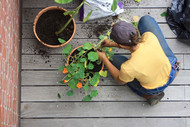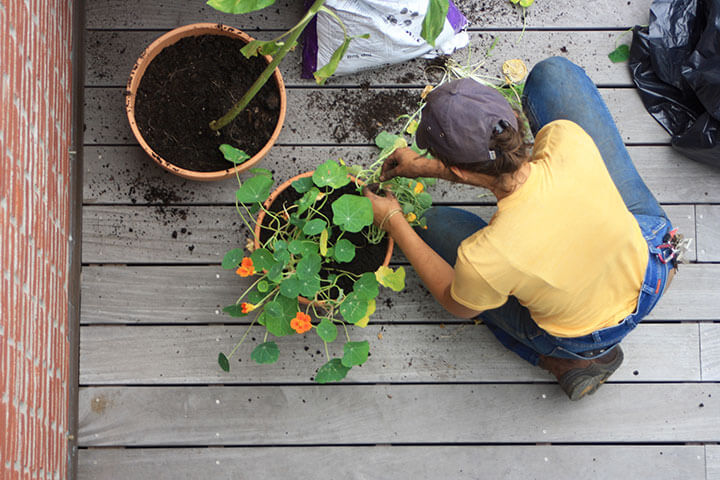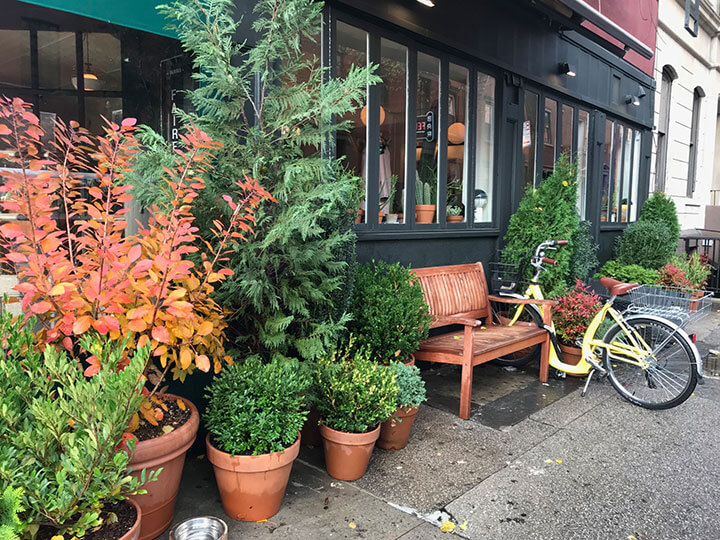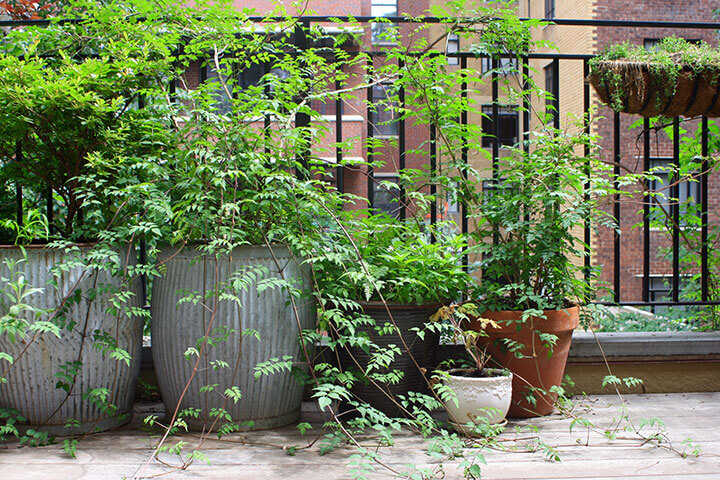
Japanese Garden Tools Vs. American: What’s the Difference?
You may have seen Japanese gardening tools popping up more in stores and online. Sure, they&rs… Read More


Container gardens, mobile or stationary plantings in pots, have come to play an integral role in our urban landscape. They offer an opportunity for flexible, accessible, and mobile green space. Additionally, they offer crucial square footage for greenery in a city that desperately needs it. In an ideal world, all of our apartments would come equipped with a mosquito free rear garden, a reinforced roof capable of holding the weight of a perennial meadow, and a terrace to boot. In reality, we’re lucky if we have a fire escape for a 5 gallon bucket filled with soil to call home, or a tree pit that isn’t impacted by passing canines. When we’re assessing New York City landscapes, in properties more often rented than owned, the expectation has to be one of minimal investment, but strong impact. This is where container gardens come in. Below are your first steps to creating a beautiful and practical garden:
Before you begin dreaming of birch trees or apple trees in your container garden, give some thought to site access and logistics. If you have to take materials up and down four flights of stairs, choose lightweight terra cotta pots or felt containers. If you don’t have access to a hose spigot and have to pull water from inside your home, consider a facet adapter and a compact hose. Alternatively, opt for plants that are drought tolerant to save you daily watering trips with a watering can. If you know your lease will be up in the next 12 months, perhaps start on a smaller scale to ensure that you can transport your garden once the move out date arrives. Giving some attention to these items now will save you time, energy, and money as your container garden develops.

This is perhaps the most overlooked component of a container garden. A few key notes that will help you make the right choices:

Before you set goals for your container garden (herbs for the summer, pollinator garden, sensory space, etc.), consider the following: How much light do you have available, and how much of your time do you expect to commit to your garden. Remember to be realistic here! We’re all desperate for home grown tomatoes but it’s important to spend time assessing your light conditions before diving into the world of fruiting crops. Perhaps your space is South facing, but it’s tucked into a corner with indirect light and therefore may better serve an herb garden. Or, your space may be parallel to reflective glass that could burn more sensitive vegetation. In any scenario, considering the range of light levels will be important to the success of your landscape. If you don’t have appropriate light exposure for the edible garden of your dreams, prioritize beautiful and shade loving columbines (Aquilegia canadensis) or ferns (Osmunda cinnamomea).
If time is a constraint and you are striving for a container garden that requires minimal attention consider grasses (Carex pennsylvanica or Panicum virgatum), or drought tolerant cacti and succulent (native Opuntia humifusa or Yucca filamentosa)*. If you are able, prioritize Northeast native, flowering vegetation. Remember that supporting pollinators is crucial to the long term health of colonies in the city.
If you’re looking for a beautiful landscape that requires no maintenance, the truth is, it doesn’t exist. However, assuming you’ve made appropriate plant choices for your setting, the ongoing maintenance should be fairly routine. Add compost at the start of the season, water**, and deadhead if you have the energy for it! Deadheading, the act of removing flowers that have completed their bloom cycle, may seem tedious, but many perennial flowers will put out multiple successions of blooms if cut back appropriately. Armed with a good set of pruners, the work will go quickly. Simply cut the spent flower back to where new growth is budding, and the plant will focus energy on new flowers. Compost your clippings or save your seeds heads for future planting.
We recommend undertaking a container garden project anytime from April through October. Planting into the off season may yield poor results the following spring, especially when you are confined to containers. Plan accordingly and enjoy your green oasis.
*Note that even if a plant is drought tolerant, during the first season of establishment all plants should receive frequent waterings. An under watered plant will not thrive and may deteriorate quickly.
**Don’t forget to water in the winter. We know it’s cold and rainy, but every so often we’ll get a scorcher in November and your container garden will feel the impact. Left unwatered during these rare winter hot spells, your perennials won’t reappear come April unless you give them an appropriate off-season soak.